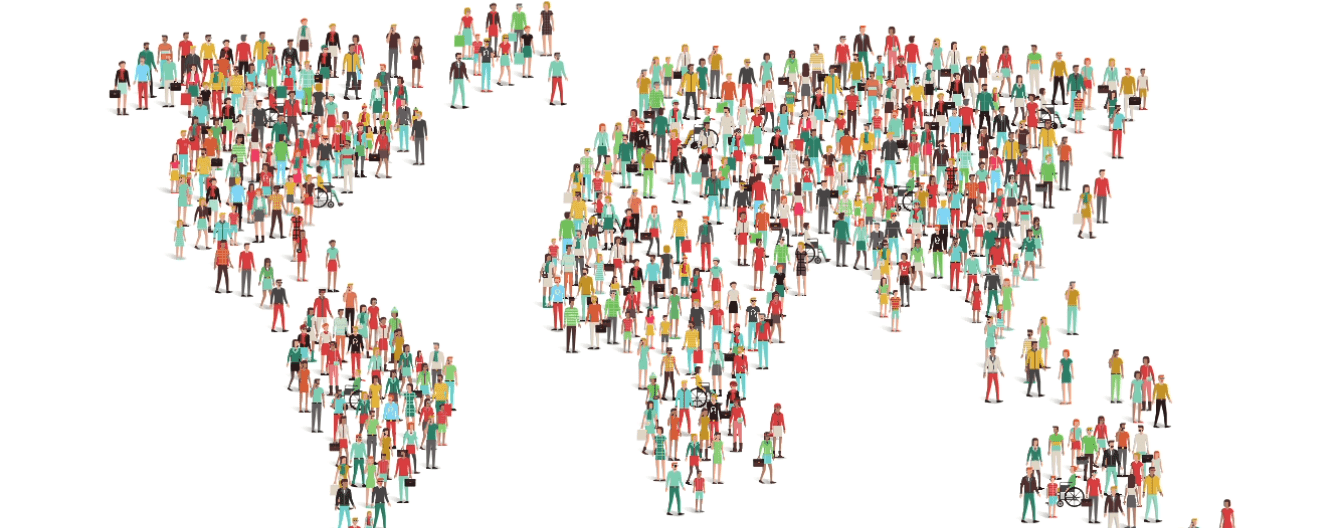Clinical Trial Diversity on a Global Scale
Article
Clinical


Reporting racial and ethnic data in clinical trials is an important step toward ensuring clinical trial diversity. But with more trials being conducted globally, it’s crucial to remember that these definitions can be different across countries.
The FDA tries to address this in its 2016 guidance document by suggesting an expanded list of racial and ethnic categories to use for data collection purposes in trials conducted outside the United States. Still, categorization isn’t the only problem sponsors face when collecting global diversity data.
In a recent Citeline webinar, “Diversity in Clinical Trials: Data, Disclosure, and Due Diligence,” panelists discussed the various facets of diversity across different nations and how to tackle diversity on a global scale. Ubong Peters, lead clinical scientist at Genentech, a member of the Roche Group, says this can be a difficult area to address.
 Ubong Peters
Ubong Peters
"In my previous role, it was our remit to be able to look at the picture and find the data wherever it exists and mine it and generate insights,” Peters says. “And the US is a great place to work in because the laws here allow us at least to be able to find de-identified patient-level data that we can then use to generate insights. But then once you go to the EU, because of the General Data Protection Regulation, the GDPR, we immediately run into issues where you are not able to do the type of work that we’re able to do here in the US.”
Some countries do provide the same type of data as the US. Nader Daoud, senior manager, clinical trial diversity & inclusion, patient and site experience (PASE) at Moderna, says the United Kingdom “does a pretty good job of what the US does” when it comes to data reporting.
“In the UK and Canada, you can get a disaggregated dataset that will remove people who would be otherwise identified,” Daoud says. “But you can get their age, their sex, their race, ethnicity, and see that individual lives in XYZ postcode. I would never be able to find out who that individual is, but I'm able to understand better through all the demographic profiling that I just described, who is in what areas.
“Because if you think about it for clinical trials, the biggest slice is who lives there. Then you’re looking at who’s in that clinical population, and then you’re looking at who’s actually going to enroll in that trial. And that’s a very small percentage, but if you’re looking for the largest slice, it’s really about who’s in that geographic area.”
 Nader Daoud
Nader Daoud
Daoud says one big problem he sees with global trials is how sponsors cannot ask for race and ethnicity information in certain areas, as in some member states of the European Union (EU).
In its 2022 briefing document, “EU legislation and policies to address racial and ethnic discrimination,” the European Parliament states:
“While the Racial Equality Directive does not define ‘ethnic or racial origin,’ its preamble states explicitly that use of the term ‘race’ does not imply any admission by the EU of ‘theories which attempt to determine the existence of separate human races.’ The Member States have adopted various formulations in their national legislation: some do not mention ‘race,’ referring only to ‘ethnic’ belonging or origin; others refer to ‘presumed race’ or ‘real or presumed’ racial belonging; yet others explicitly mention skin color as a protected ground or as a characteristic feature of a national or ethnic minority.”
Daoud says, “In all honesty, there’s lots of confusion because race and ethnicity themselves are not real. Race is kind of an American social construct, and a lot of other places they just ask about ethnicity. It’s even weirder in the UK or in other parts of the world to ask well, do you identify as Hispanic or Latinx? And well then, what’s your race? Because there are people who would just say, that is my race or ethnicity. That is the whole question. So, I think that part of it is difficult because of the lack of standardization.”
In the UK, sponsors are not obligated to record ethnicity in clinical trials.1 However, a few agencies are taking steps to bring diversity into the conversation.
For example, the Innovations in Clinical Trial Design and Delivery for the Under-served (INCLUDE) project initiated by the UK’s National Institute for Health Research in 2018 has as it goal to broaden inclusion of underserved groups in life sciences research. And the NHS Health Research Authority (HRA) and the Medicine and Healthcare products Regulatory Agency (MHRA) are working together on future guidance for increasing clinical trial diversity in the UK.2
Meanwhile, the European Medicines Agency touches on diversity in its updated Clinical Trials Regulation by stating representation of the population to be treated will be considered in the clinical trial application assessment.
 Chrissa McFarlane
Chrissa McFarlane
Chrissa McFarlane, founder and CEO of health technology company Patientory, says she believes there must be a mind shift from a globalization perspective in viewing diversity in trials.
“I believe there’s an opportunity to start to integrate more technology-enabled solutions,” she says. “When we think about universal patient identifiers, I think the first step is identifying that race as well is a social construct. We've kind of mastered that here in the US. When we look at other regions where it’s not acceptable to classify certain groups of people, I believe there’s an opportunity to use even lower than that genomic data sets where we can start to really identify what that diversity is and really start to employ diversity strategies around this type of information and universal patient identifiers. Today, as we see it, that information is, as we know, limited; it’s fragmented. But until we have this standardization in place from a global perspective, I think we have opportunity there to move in that direction.”
From a privacy perspective, Daoud says intolerance is also an issue. “I think this gets much more pointed [because] if you’re doing a trial on HIV, … if you’re doing a trial on HSV-2, sexual orientation, gender identity matter,” he says. “There are communities that are way more affected by these that are minority communities within this. And you can’t ask, even if you were to make it private — like you’re asking through ePRO, for example, instead of EDC — you can’t really ask the patients those questions in certain countries because you never know what data privacy laws they have. [You don’t know] if governments might access that data that gets transferred, and then they have a list of people who identify X, Y, Z way.
“So, the problem becomes how do you expand diversity globally when there are parts of the world that very much are not tolerant of certain aspects of the spectrum of diversity? That limits things in lots of parts of the world.”
Peters says the message he would have for the EU is it needs to strike a very careful balance between data privacy and access to diversity data. “Because at the end of the day, this data actually does help with improving clinical trial diversity, identifying pockets or deserts, if you will, where there may be people who are not able to gain access points into clinical trials,” he says. “And as such, they’re not able to enjoy the benefits of these emerging therapies that the pharmaceutical industry is working on.
“There are a couple of different vendors who have been able to commission studies where they have data for certain diseases. And you just end up having various pockets and very cut and paste going about this data collection effort. It’s very tedious. It would be really great to be able to have a more centralized way to be able to get this type of data.
“I think the EU can borrow a leaf from the US, for example, because once this data is de-identified, aggregated, it’s very difficult to then accidentally unblind that data and then break the privacy of a particular patient. There are even ways that we could round up the data or even round it down such that it’s almost impossible to geolocate where that data is coming from. So, you can’t even really tell who that patient is.”
Peters says he does appreciate that the EU’s stringent laws are trying to protect patient privacy. “But at the same time, I think there’s still more that could be done to relax the rules a little bit to allow those of us in the healthcare industry to be able to lay our hands on this data so that we can use it to better serve the patients,” he says.
1 Treweek S, Forouhi NG, Narayan KMV, Khunti K (2020) COVID-19 and ethnicity: who will research results apply to? The Lancet, 395(10242), 1955-1957. Available from https://doi.org/10.1016/S0140-6736(20)31380-5 [Accessed Oct. 12, 2023].
2 NHS Health Research Authority (2023) Increasing the diversity of people taking part in research. Available from https://www.hra.nhs.uk/planning-and-improving-research/best-practice/increasing-diversity-people-taking-part-research/ [Accessed Oct. 12, 2023].


